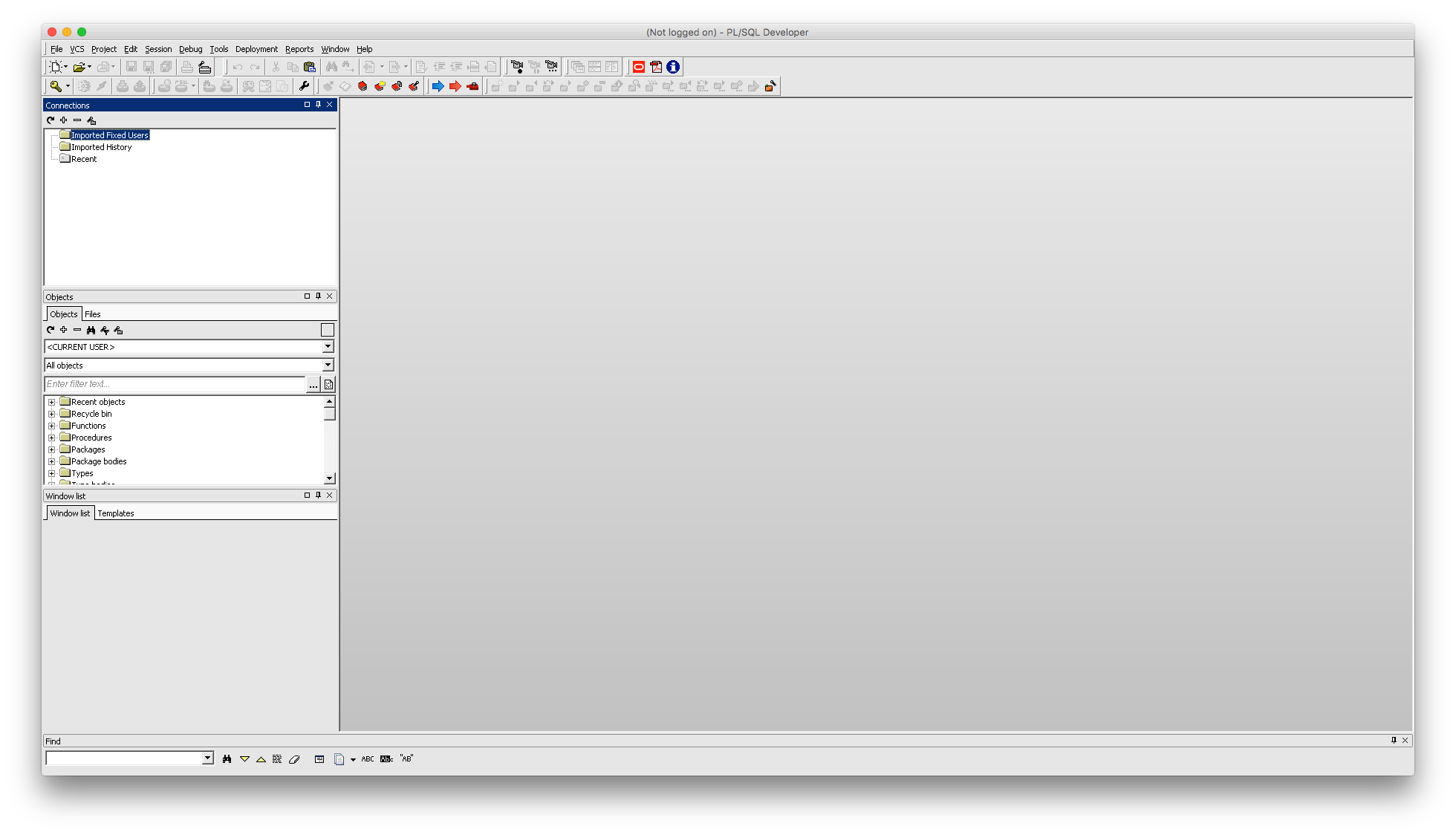PL/SQL Developer usage tips, shortcut keys
PL/SQL Developer by IFS Allround Automations is a feature-rich Integrated Development Environment (IDE) that was designed to help users develop units for Oracle databases using PL/SQL programming. Sadly, there is no version of PL/SQL Developer for Mac, but there are some other tools that can prove to be quite useful.
Free download SQLDeveloper SQLDeveloper for Mac OS X 👍. SQLDeveloper 🛠 - Oracle SQL Developer is a free graphical tool that enhances productivity and simplifies database development tasks. “PL/SQL Developer is the best tool available on the planet for dealing with Oracle. I feel as though I should share some of the profits with you, the retail selling price for PL/SQL Developer has already been recovered many times over” Jeffrey Martin, Philips “. Oracle SQL Developer is a free graphical tool that enhances productivity and simplifies database development tasks. With SQL Developer, you can browse database objects, run SQL statements and SQL scripts, edit and debug PL/SQL statements, manipulate and export data, and view and create reports. Global Nav Open Menu Global Nav Close Menu; Apple; Shopping Bag +.
1, set the keyword automatic capitalization: tools->preferences->editor, will keyword case select uppercase. When you enter SQL statements in a window, the keywords are automatically capitalized, and the others are lowercase. This is easy to read code, and to maintain a good coding style, in the same way, in Tools->preferences->code Assistant (assistant) can set the code hint delay time, enter a few characters when prompted, the database object uppercase, lowercase, First letter capitalization, etc.;
2. Review the execution plan: Select the SQL statement you want to analyze, then click the Explain Plan button on the toolbar (i.e. execution plan), or press F5 directly; this is mainly used to analyze the efficiency of SQL statement execution, analyze the structure of the table, so as to provide a visual basis for SQL tuning;
3, automatic replacement: Fast input SQL statements, such as input s, press the space, automatically replaced by select; for example, enter SF, press space, automatically replaced by select * from, very convenient, save a lot of time to write duplicate SQL statements.
Setup method: Menu Tools–>preferences–>editor–>autoreplace (auto-replace) –>edit
1), create a text file Shortcuts.txt, and write the following content:
S=select
Copy code is saved to the ~/plugins directory under the PL/SQL Developer installation path
2), Tools–>preferences–>user interface–>editor–>autoreplace, select the Enable check box, Then browse to the file and select the Shortcuts.txt you created before clicking Apply.
3), restart PL/SQL Developer, enter the s+ space in the windows, sc+ space to do the test.
Note: Shortcuts.txt cannot be removed, otherwise shortcut keys will not work
The following defines some rules as a reference
I=insert
U=update
S=select
F=from
W=where
O=order by
D=delete
Df=delete from
Sf=select * FROM
Sc=select COUNT (*) from
Sfu=select * from for UPDATE
Cor=create OR REPLACE
P=procedure
Fn=function
T=tigger
V=view
Sso=set serveroutput on;
Set shortcut keys (Setup method: Menu tools–>preferences–> user interface –> key configuration)
New SQL window: Ctrl+shift+s
New command window: ctrl+shift+c
New Test window: ctrl+shift+t
PL/SQL developer beautification: ctrl+shift+f
Redo: Ctrl+shift+z
Undo: Ctrl + Z
Clear: Ctrl+d (use caution, unrecoverable, I am disabled O (∩_∩) o~)
Check all: Ctrl + A
Indent: Tab
Cancel indent: Shift+tab
Uppercase: Ctrl+shift+x
Lowercase: ctrl+shift+y
Note: ctrl+h
Uncomment: Ctrl+m
Search: Ctrl+f
Show Table structure: CTRL + mouse hover over table name
List of templates: Shift+alt+r
Window list: ctrl+w
4, TNS Names: Menu Help->support info (support information)->tns Names, you can view the Tnsnames.ora of Oracle;
5. Debugging Stored Procedures
When using PL/SQL developer to operate Oracle, some stored procedures are sometimes called, or stored procedures are debugged;
Methods for calling stored procedures:
1) First, select procedures in the browser on the left of PL/SQL developer to find the stored procedure that needs to be called;
2), then, select the debug stored procedure, right-click, select Test, in the Test Scrīpt window, for the parameter defined in the type, you need to give the value of the parameter input, the last click on the number of buttons: Start debugger or press F9;
3), Last click: RUN or Ctrl+r.
debugging shortcut keys
Toggle Breakpoint: Ctrl+b
Start: F9
Run: Ctrl+r
Single Step Into: Ctrl + N
Step Skip: Ctrl+o
Single Step exit: Ctrl+t
Run to Exception: Ctrl+y
6. My Objects is automatically selected by default after login
Oracle Sql Developer Mac Os X Download
By default, after Plsql developer is logged in, Brower will select all objects, and if you are logged on as a DBA, you will need to wait a few seconds for the tables directory to expand, and the response rate after selecting my objects is in milliseconds.
Setup method:
The Tools menu –>brower Filters opens the Order window for Brower folders and sets 'My Objects' to default.
Tools menu –>brower Folders The few directories you regularly order (e.g. Tables views Seq Functions Procedures) Move up a bit and color-coded so that your average look-up time will be much shorter and try.

Priority, from left to right
Tables–>tablespaces–>procedures–>users–>roles
Pl Sql Developer 11 Download
PL/SQL Developer usage tips, shortcut keys